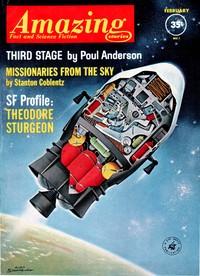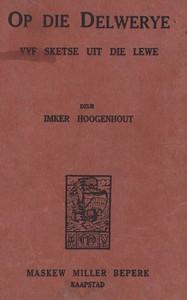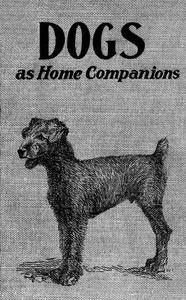Read this ebook for free! No credit card needed, absolutely nothing to pay.
Words: 20191 in 5 pages
This is an ebook sharing website. You can read the uploaded ebooks for free here. No credit cards needed, nothing to pay. If you want to own a digital copy of the ebook, or want to read offline with your favorite ebook-reader, then you can choose to buy and download the ebook.
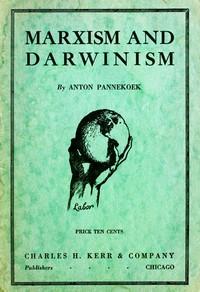

: Marxism and Darwinism by Pannekoek Anton Weiser Nathan Translator - Socialism; Darwin Charles 1809-1882; Marx Karl 1818-1883; Evolution (Biology) Political aspects
PAGE.
Two scientists can hardly be named who have, in the second half of the 19th century, dominated the human mind to a greater degree than Darwin and Marx. Their teachings revolutionized the conception that the great masses had about the world. For decades their names have been on the tongues of everybody, and their teachings have become the central point of the mental struggles which accompany the social struggles of today. The cause of this lies primarily in the highly scientific contents of their teachings.
The scientific importance of Marxism as well as of Darwinism consists in their following out the theory of evolution, the one upon the domain of the organic world, of things animate; the other, upon the domain of society. This theory of evolution, however, was in no way new, it had its advocates before Darwin and Marx; the philosopher, Hegel, made it even as the central point of his philosophy. It is, therefore, necessary to observe closely what were the achievements of Darwin and Marx in this domain.
The theory that plants and animals have developed one from another is met with first in the nineteenth century. Formerly the question, "Whence come all these thousands and hundreds of thousands of different kinds of plants and animals that we know?" was answered. "At the time of creation God created them all, each after its kind." This primitive theory was in conformity with the experiences had and with the oldest information that could be got. According to the information, all known plants and animals have always been the same. Scientifically, this experience was thus expressed, "All kinds are invariable because the parents transmit their characteristics to their children."
There were, however, some peculiarities among plants and animals which gradually forced a different conception to be entertained. They so nicely let themselves be arranged into a system which was first set up by the Swedish scientist Linnaeus. According to this system, the animals are divided into main divisions; these divisions are divided into classes, classes into orders, orders into families, families into species, each of which contain a few kinds. The more semblance there is in their characteristics, the nearer they stand towards each other in this system, and the smaller is the group to which they belong. All the animals classed as mammalian show the same general characteristics in their bodily frame. The herbivorous animals, and carnivorous animals, and monkeys, each of which belongs to a different order, are again differentiated. Bears, dogs, and cats, all of which are rapacious animals, have much more in common in bodily form than they have with horses or monkeys. This conformity is still more obvious when we examine varieties of the same species; the cat, tiger and lion resemble each other in many respects where they differ from dogs and bears. If we turn from the class of mammals to other classes, such as birds or fishes, we find greater differences than we find in the other class. There is still, however, a slight resemblance in the formation of the body, the skeleton and the nervous system are still there. These features first disappear when we turn from this main division, which embraces all the vertebrates, and go to the molluscs or to the polyps.
The entire animal world may thus be arranged into divisions and subdivisions. Had every different kind of animal been created entirely independent of all the others, there would be no reason why such orders should exist. There would be no reason why there should not be mammals having six paws. We would have to assume, then, that at the time of creation, God had taken Linnaeus' system as a plan and created everything according to this plan. Happily we have another way of accounting for it. The likeness in the construction of the body may be due to a real family relationship. According to this conception, the conformity of peculiarities show how near or remote the relationship is; just as the resemblance of brothers and sisters is greater than between remote relatives. The animal classes were, therefore, not created individually, but descended one from another. They form one trunk that started with simple foundations and which has continually developed; the last and thin twigs are our present existing kinds. All species of cats descend from a primitive cat, which together with the primitive dog and the primitive bear, is the descendant of some primitive type of rapacious animal. The primitive rapacious animal, the primitive hoofed animal and the primitive monkey have descended from some primitive mammal, etc.
This theory of descent was advocated by Lamarck and by Geoffrey St. Hilaire. It did not, however, meet with general approval. These naturalists could not prove the correctness of this theory and, therefore, it remained only a hypothesis, a mere assumption. When Darwin came, however, with his main book, The Origin of Species, it struck like a thunderbolt; his theory of evolution was immediately accepted as a strongly proved truth. Since then the theory of evolution has become inseparable from Darwin's name. Why so?
This was partly due to the fact that through experience ever more material was accumulated which went to support this theory. Animals were found which could not very well be placed into the classification such as oviparous mammals , fishes having lungs, and invertebrate animals. The theory of descent claimed that these are simply the remnants of the transition between the main groups. Excavations have revealed fossil remains which looked different from animals living now. These remains have partly proved to be the primitive forms of our animals, and that the primitive animals have gradually developed to existing ones. Then the theory of cells was formed; every plant, every animal, consists of millions of cells and has been developed by incessant division and differentiation of single cells. Having gone so far, the thought that the highest organisms have descended from primitive beings having but a single cell, could not appear as strange.
All these new experiences could not, however, raise the theory to a strongly proved truth. The best proof for the correctness of this theory would have been to have an actual transformation from one animal kind to another take place before our eyes, so that we could observe it. But this is impossible. How then is it at all possible to prove that animal forms are really changing into new forms? This can be done by showing the cause, the propelling force of such development. This Darwin did. Darwin discovered the mechanism of animal development, and in doing so he showed that under certain conditions some animal-kinds will necessarily develop into other animal-kinds. We will now make clear this mechanism.
Its main foundation is the nature of transmission, the fact that parents transmit their peculiarities to children, but that at the same time the children diverge from their parents in some respects and also differ from each other. It is for this reason that animals of the same kind are not all alike, but differ in all directions from the average type. Without this so-called variation it would be wholly impossible for one animal species to develop into another. All that is necessary for the formation of a new species is that the divergence from the central type become greater and that it goes on in the same direction until this divergence has become so great that the new animal no longer resembles the one from which it descended. But where is that force that could call forth the ever growing variation in the same direction?
Lamarck declared that this was owing to the usage and much exercise of certain organs; that, owing to the continuous exercise of certain organs, these become ever more perfected. Just as the muscles of men's legs get strong from running much, in the same way the lion acquired its powerful paws and the hare its speedy legs. In the same way the giraffes got their long necks because in order to reach the tree leaves, which they ate, their necks were stretched so that a short-necked animal developed to the long-necked giraffe. To many this explanation was incredible and it could not account for the fact that the frog should have such a green color which served him as a good protecting color.
To solve the same question, Darwin turned to another line of experience. The animal breeder and the gardener are able to raise artificially new races and varieties. When a gardener wants to raise from a certain plant a variety having large blossoms, all he has to do is to kill before maturity all those plants having small blossoms and preserve those having large ones. If he repeats this for a few years in succession, the blossoms will be ever larger, because each new generation resembles its predecessor, and our gardener, having always picked out the largest of the large for the purpose of propagation, succeeds in raising a plant with very large blossoms. Through such action, done sometimes deliberately and sometimes accidentally, people have raised a great number of races of our domesticated animals which differ from their original form much more than the wild kinds differ from each other.
Free books android app tbrJar TBR JAR Read Free books online gutenberg
More posts by @FreeBooks
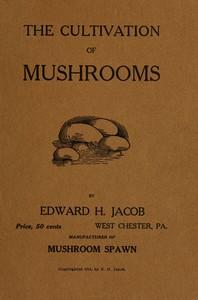

: And it was good by Earley A Adkins Dan Illustrator - Short stories; Second Advent Fiction; Apocalyptic fiction; Speculative fiction
